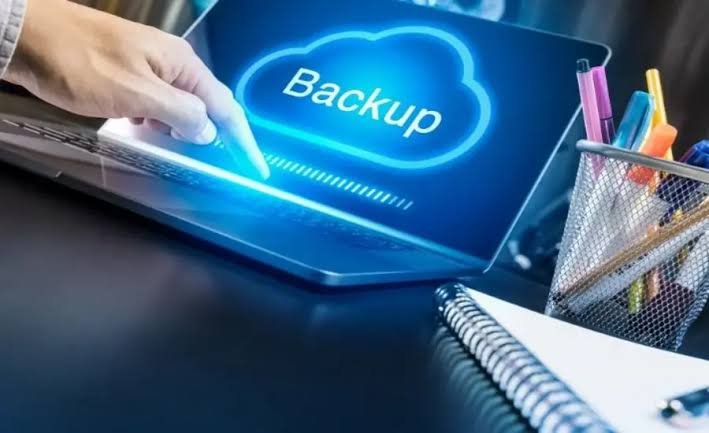In today’s world of music production, digital workstations and plugins are the backbone of creativity. If you’ve been exploring sound design or digital production, you’ve probably come across “ElectraX.” This powerful software synthesizer, known for its high-quality sound engine and customizable options, often leaves users wondering about the meaning of “backup media” within it. What is “backup media” in ElectraX, and why does it matter? This post will walk you through what backup media means in ElectraX, why it’s essential for every music producer, and how it can keep your projects safe and ready for the long run.
Let’s dive into the details!
What is Backup Media in ElectraX?
When we talk about backup media in ElectraX, we’re referring to a way to safely save and store your ElectraX sound libraries, presets, and even entire project files. Backup media essentially means creating a secure copy of your data that you can retrieve in case of data loss, software corruption, or unexpected crashes. Since ElectraX allows users to create, customize, and store sound presets, having a backup media solution is crucial to ensure these personalized sounds aren’t lost.
Imagine spending hours crafting the perfect sound for a track only to lose it to a system failure. Backup media makes sure that you can restore your work, avoiding setbacks and ensuring you keep your creativity flowing without interruptions.
Why is Backup Media Important for ElectraX?
- Protection Against Data Loss: Music production involves hours of tweaking and perfecting. If a system crash or software error occurs, all that hard work can be wiped out. Backup media helps keep copies of your ElectraX files so you don’t lose your unique sounds or progress.
- Prevents Downtime: Imagine your system crashing right before a big deadline or performance. Backup media can reduce downtime by allowing you to retrieve and reload your presets and sound libraries quickly.
- Future Proofing Your Sounds: ElectraX users often craft unique sounds tailored to their style. These can be invaluable assets, and preserving them through backup media allows you to have your sounds even as you upgrade or change devices.
- Efficient Workflow: With backup media, you won’t have to worry about recreating lost sounds from scratch. Instead, you can pick up right where you left off, helping maintain an efficient and smooth workflow.
How to Back Up ElectraX Files
Creating backup media for ElectraX isn’t difficult, and there are a few common ways you can approach it. Let’s look at a few methods:
1. External Hard Drives or USB Drives
- This method involves copying your ElectraX files—such as presets and sound libraries—onto a physical external hard drive or USB drive. External drives are reliable and offer offline storage, keeping your data safe from online threats.
- Tip: Label the backup folders clearly with dates to track different versions or updates.
2. Cloud Storage Services
- Cloud storage options like Google Drive, Dropbox, or OneDrive can provide secure, offsite backups of your ElectraX files. These services are accessible from any internet-connected device, making it easy to recover your sounds and presets remotely.
- Tip: Make sure to use strong passwords and enable two-factor authentication for added security.
3. Dedicated Music Production Backup Software
- Some software solutions, like Splice, offer cloud-based backup specifically for music projects, including plugins like ElectraX. These platforms can automatically save each version of your project file, giving you a detailed history of your work.
- Tip: Regularly check that your backups are complete and up-to-date, as automation sometimes misses the latest files.
Tips for Effective Backup Media Management
To make sure you get the most out of your backup media, consider these helpful tips:
- Keep Multiple Copies: Always have at least two backup copies, with one on a physical drive and another in the cloud, to ensure redundancy.
- Schedule Regular Backups: Set a reminder to back up your ElectraX files regularly—at least weekly or after every significant project update.
- Organize Your Files: Properly label and organize folders by project or date to make finding specific files easier and faster.
- Test Your Backups: Occasionally, try restoring files from your backup media to ensure they’re fully intact and functional.
Conclusion
Backup media in ElectraX is essential for safeguarding the creative assets that take hours to craft. By implementing a reliable backup system, you’re securing not just your files but also your time and effort. Whether it’s through external drives, cloud storage, or dedicated backup software, having a backup plan can prevent unnecessary stress and keep your creative flow intact. ElectraX is a powerful tool in sound design, and with the right backup media, you can enjoy peace of mind knowing your sounds are safe.
Frequently Asked Questions (FAQs)
1. What happens if I don’t back up my ElectraX files?
If you don’t back up your ElectraX files, you risk losing your presets, sounds, and progress in case of a software crash or hardware failure. This can be challenging and time-consuming to recreate.
2. Can I use any cloud service for ElectraX backup?
Yes, you can use any cloud service, like Google Drive or Dropbox. Just make sure your files are organized and that you have enough storage space for large projects.
3. How often should I back up my ElectraX files?
It’s recommended to back up your files after any major change, or at least once a week to ensure you have the latest versions saved.
4. Are external hard drives safer than cloud storage?
Each option has its pros and cons. External hard drives are immune to online hacking, but they can be physically damaged. Cloud storage, on the other hand, is accessible anywhere but requires internet access and can be at risk of data breaches.
5. Can I restore deleted presets in ElectraX without a backup?
Unfortunately, without a backup, deleted presets are typically lost permanently. That’s why creating a backup media plan is so important.

